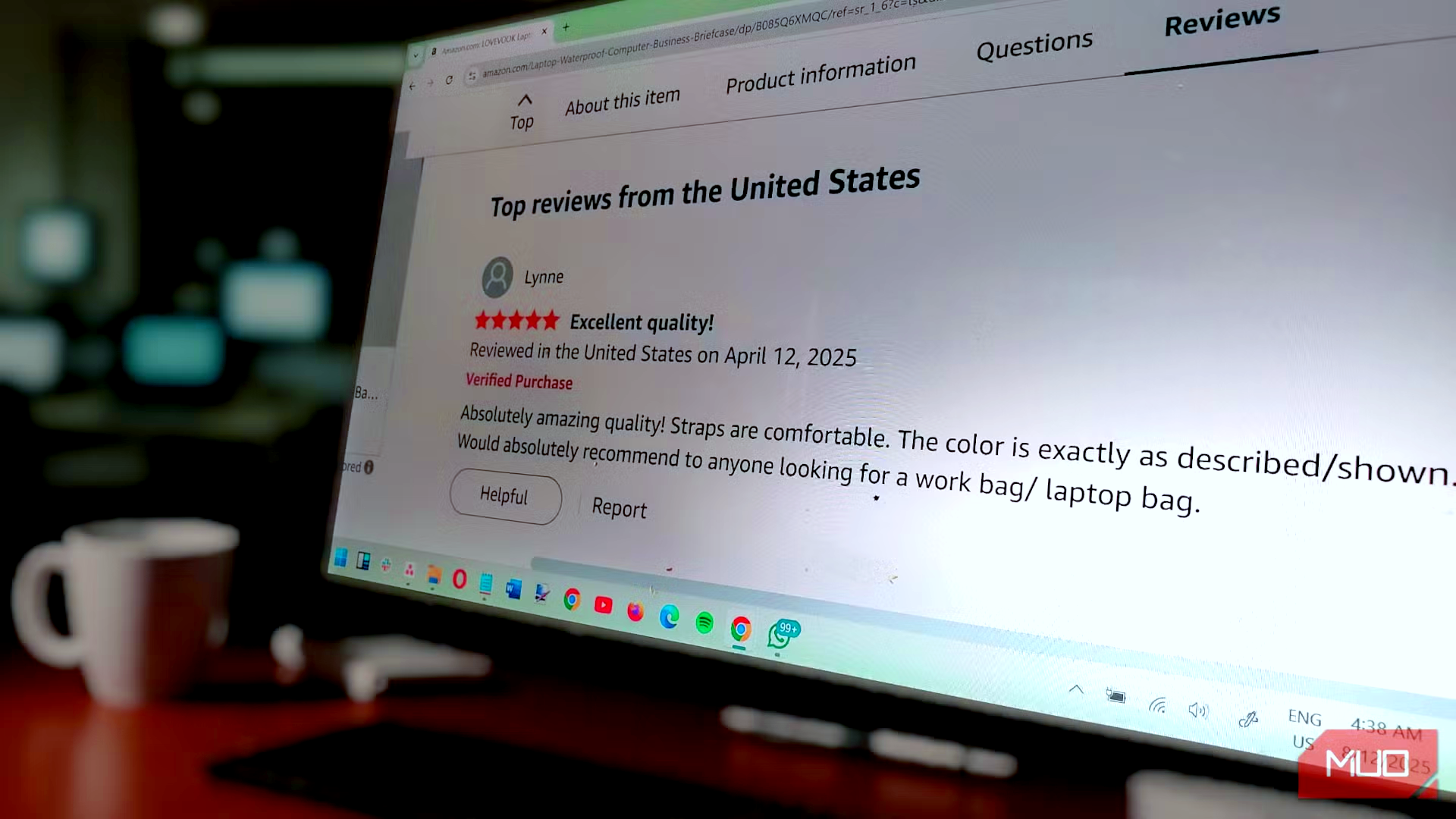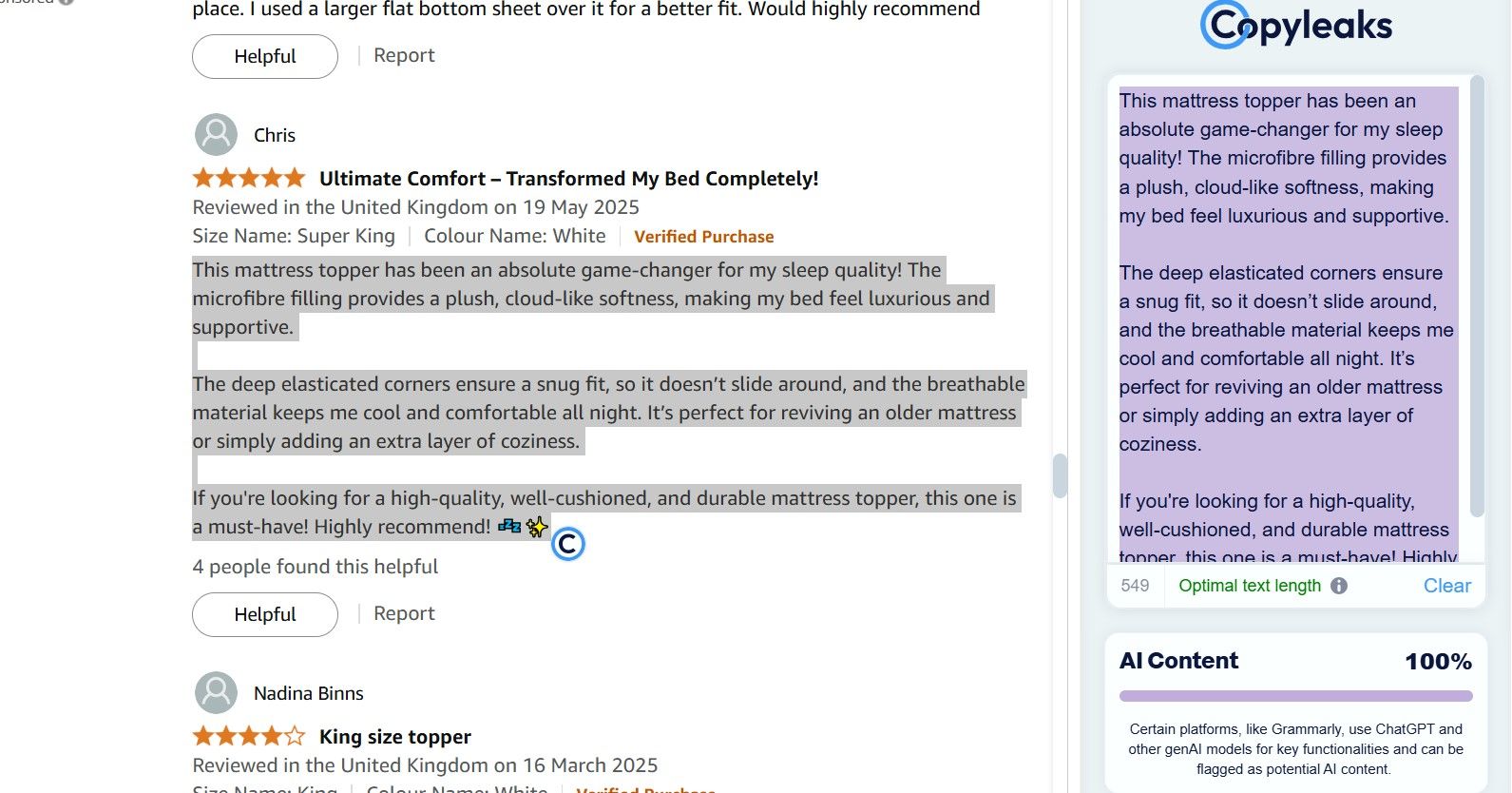Shopping online is easy. Too easy. You see a product, scroll through the reviews, and before you know it, you’re buying it. But the problem is that not every glowing review you read comes from an actual human. AI writes some, and spotting them isn’t always straightforward. Here’s what I look out for.
6
The Language Feels a Bit Too Perfect
One of the easiest tells is in the writing itself. AI-generated reviews often sound like they’ve been combed over by a panel of grammar sticklers—every sentence pristine, punctuation flawless, not a single stray typo. Which is fine, I guess. But that’s just not how most of us bang out a quick product review.
When I’m leaving a review, I’m usually typing on my phone, and not writing like my editor would proofread it. I’ll toss in slang, skip words, maybe drop something like, “luv it!” or “meh, not bad.” If I’m feeling a touch more formal, it’s still along the lines of, “Does the job. A bit noisy, but grinds fast. Worth the money.“
Of course, that’s not how everyone writes reviews, but it links to my next point nicely.
5
Suspiciously Generic Praise or Criticism
AI loves being vague and nonspecific in its reviews whenever possible. It will spit out stuff like, “the craftsmanship of this product exceeded my expectations at an unbeatable price,” and even add tired clichés like “… total game-changer,” which tells me absolutely nothing, and could apply to a frying pan, a sofa, or a pair of socks. And sometimes it just parrots the product description word for word.
A real buyer, on the other hand, is more likely to give oddly specific, lived-in feedback you get from someone who’s actually used a laptop bag, like, “The front pocket is just big enough for my notebook, but I wish it had a side pouch for my water bottle.” They might talk about the exact color (“the navy blue looks darker in person“), the model quirks, or the little inconveniences that come with actually using the product.
4
Repetitive Phrases Across Multiple Reviews
Sometimes the giveaway isn’t in a single review, but in the chorus, they form together in a row. AI-written ones have this telltale habit of leaning on the same stock phrases. If I keep spotting identical sentence rhythms or copy-paste language, my suspicion radar starts blipping. And while AI can remix its wording, lazy spammers often don’t bother; they’ll just drop the same blurb under a handful of fake names.
It’s also worth checking if different reviewers coincidentally fixate on the same oddly specific point. If three different people all declare that a blender is “perfect for making smoothies for two,” in those exact words, I’m pretty sure none of them actually went anywhere near a smoothie.
3
Oddly Timed Review Bursts
Another thing I check is the timeline of reviews. If a product has been online for months but suddenly gets twenty 5-star reviews in the same week, that’s a red flag.
AI makes it easy for sellers to flood a product page with glowing feedback all at once. Real customers leave reviews more sporadically. A sudden spike in reviews often means someone is trying to boost a product’s rating quickly, usually before a sales event or to bury earlier bad reviews.
Most shopping sites let you sort reviews by date, so it’s easy to spot when a suspicious cluster appears.
2
Photos That Don’t Match the Product
Visuals can also be a giveaway. Many AI-written reviews come with generic stock-looking images, or the photos don’t match the product exactly.
When in doubt, reverse-image search the photo. If it’s from a stock photography site or appears in dozens of other listings, it’s not from a real buyer. Real customer photos tend to be slightly messy, like a shot of the product on their kitchen table or in their hand, with all the imperfections of quick phone photography.
When my gut tells me a review section is sketchy, I sometimes turn to browser extensions for automatically detecting AI content like Copyleaks, which can scan any review for AI-generated text right from your browser. If a review has you second-guessing, just highlight the text, click the little Copyleaks icon that pops up underneath, and a sidebar will slide in from the right to tell you in seconds whether it suspects AI had a hand in it.
For the image side of things, BitMind is great at detecting AI-generated images. All you have to do is hover over a product photo, and it’ll give you a probability score of whether “Real” or AI-generated” in the top-right corner of the image, so photorealistic but fake pictures do not fool you.
While these tools aren’t perfect (they can sometimes flag legitimate reviews or miss bad ones), they’re a good extra layer of protection. I don’t rely on them completely, but I use them to back up my own instincts.
AI-written reviews aren’t always easy to spot, as no single sign is enough to declare a review fake. However, when I see several of these red flags together, I take a step back before buying.










